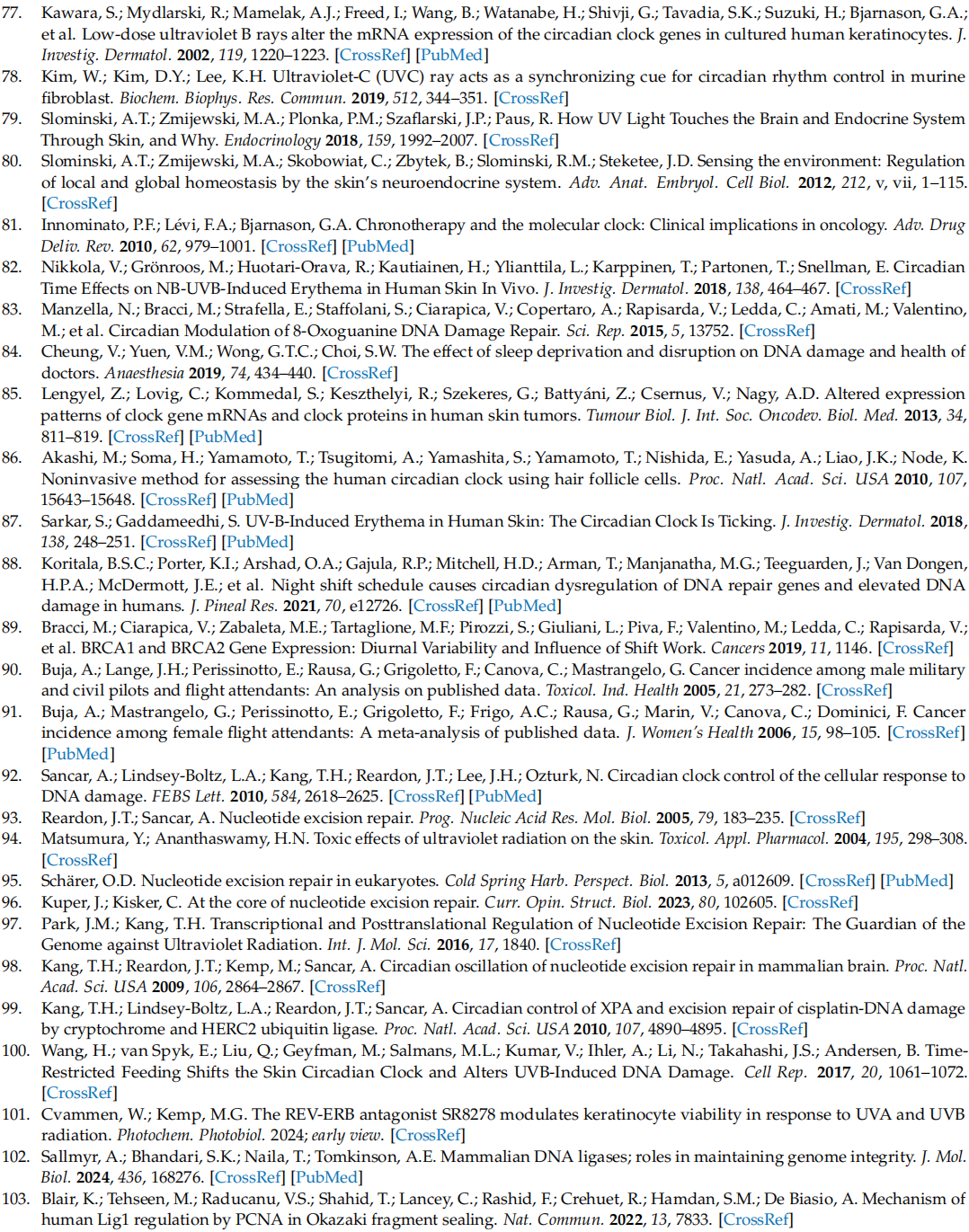



























This article is excerpted from the Int. J. Mol. Sci. 2024, 25, 10926 by Wound World.
Zhi Su 1,†, Qianhua Hu 1,†, Xiang Li 1 , Zirun Wang 1 and Ying Xie 1,2,*
1 Key Laboratory of Molecular Epidemiology of Hunan Province, School of Medicine, Hunan Normal University, Changsha 410081, China
2 Key Laboratory of Model Animals and Stem Cell Biology in Hunan Province, School of Medicine, Hunan Normal University, Changsha 410081, China
* Correspondence: 该Email地址已收到反垃圾邮件插件保护。要显示它您需要在浏览器中启用JavaScript。
† These authors contributed equally to this work.
Abstract: Circadian rhythms, the internal timekeeping systems governing physiological processes, significantly influence skin health, particularly in response to ultraviolet radiation (UVR). Disruptions in circadian rhythms can exacerbate UVR-induced skin damage and increase the risk of skin aging and cancer. This review explores how circadian rhythms affect various aspects of skin physiology and pathology, with a special focus on DNA repair. Circadian regulation ensures optimal DNA repair following UVR-induced damage, reducing mutation accumulation, and enhancing genomic stability. The circadian control over cell proliferation and apoptosis further contributes to skin regeneration and response to UVR. Oxidative stress management is another critical area where circadian rhythms exert influence. Key circadian genes like brain and muscle ARNT-like 1 (BMAL1) and circadian locomotor output cycles kaput (CLOCK) modulate the activity of antioxidant enzymes and signaling pathways to protect cells from oxidative stress. Circadian rhythms also affect inflammatory and immune responses by modulating the inflammatory response and the activity of Langerhans cells and other immune cells in the skin. In summary, circadian rhythms form a complex defense network that manages UVRinduced damage through the precise regulation of DNA damage repair, cell proliferation, apoptosis, inflammatory response, oxidative stress, and hormonal signaling. Understanding these mechanisms provides insights into developing targeted skin protection and improving skin cancer prevention.
Keywords: ultraviolet radiation; DNA damage repair; circadian rhythms; skin photoaging
Citation: Su, Z.; Hu, Q.; Li, X.; Wang, Z.; Xie, Y. The Influence of Circadian Rhythms on DNA Damage Repair in Skin Photoaging. Int. J. Mol. Sci. 2024, 25, 10926. https://doi.org/10.3390/ ijms252010926
Academic Editor: Ashis Basu
Received: 15 August 2024
Revised: 29 September 2024
Accepted: 8 October 2024
Published: 11 October 2024
Copyright: © 2024 by the authors. Licensee MDPI, Basel, Switzerland.
This article is an open access article distributed under the terms and conditions of the Creative Commons Attribution (CC BY) license (https:// creativecommons.org/licenses/by/ 4.0/)




























This article is excerpted from the Int. J. Mol. Sci. 2024, 25, 10926 by Wound World.
